The ESV Gospel Transformation Study Bible is a study Bible from Crossway that focuses redemption throughout Scripture and how it culminates in the gospel for us today. This edition is an update of the original ESV Gospel Transformation Bible that was released in 2013. It’s available in hardcover, TruTone, and top grain leather. I’m reviewing the hardcover, ISBN: 9781433563591, printed in China.
Crossway provided this Bible in exchange for an honest review. I was not required to give a positive review, only an honest one. All opinions are my own.
_________________________________________________________
This book is available at (includes some affiliate links)
and many local Bible bookstores
_________________________________________________________
Video Review
Cover and Binding
This edition is hardcover with a dust jacket. The design of the hardcover is slightly different, but it uses the same design elements as the dust jacket. I usually don’t like dust jackets, but I actually like this one. It’s extra-thick paper with a rough text and matte finish. It reminds me of the high-quality paper used for pencil and brush artwork.
The text-block is Smyth sewn and has no issues laying open to any page. The overall size is 6.5 x 9.5 x 2.25″. It weighs 3lbs, 8.5oz. It includes one brown ribbon.
Paper
The paper is 36gsm Thin Opaque. It’s highly opaque and has a good contrast with the text. It’s eggshell in color and has a slightly rough texture that makes it easy to turn and it isn’t noisy when you turn it. It has no glare under direct light. This is excellent paper for making notes and highlighting with pens and markers made for Bibles.
Typography
The text is presented in a single-column paragraph layout with references in the inner margins and footnotes placed under the text. Commentary notes are placed at the bottom of each page in a double-column layout. The header shows the book name, chapter, and verse numbers in the outer column with the page number centered.
The text is Lexicon 9-point black letter, while the notes are 7.25. It has a good amount of space between the lines, making it a good text to read. The print is about a medium darkness and it’s highly consistent. Headings are in italics. I find them easy to ignore while reading, but helpful for searching the page or understanding the context.
The text has around 12-14 words per line, which is great for reading. Poetry looks nice, too. It isn’t printed with line-matching, but the paper is opaque enough that I didn’t find this to be an issue with readability.
Cross-reference and footnote keys are small and easy enough to ignore for reading, but legible enough to use. Verse numbers are small and slightly bolder than the text. I found them easy enough to see for study or following along with someone.
Family Records
Family records are placed in the front. They’re printed on thick paper. They include the presentation page, marriages, births/adoptions, and deaths.
References
It includes the same 80,000 cross-references as the ESV Study Bible. They’re placed in the inner column, but it has plenty enough room so they’re not too close to the gutter. They’re excellent for study, sermon prep, classwork, etc.
Here are some example references to help you compare:
- Genesis 1:1 – Job 38:4-7; Ps 33:6; 136:5; Isa 42:5; 45:18; Jn 1:1-3; Ac 14:15; 17:24; Col 1:16, 17; Heb 1:10; 11:3; Rev 4:11
- Deuteronomy 6:4 – cited Mk 12:29; Is 42:8; Zech 14:9; Jn 17:3; 1 Cor 8:4, 6
- Isaiah 9:6 – Lk 2:11; Jn 3:16; ch 7:14; Matt 28:18; 1 Cor 15:25; ch 22:22; 28:29; 10:21, 17; Neh 9:32; Jer 32:18; Ps 45:3; Ps 72:17; ch 63:16; Jn 14:18; Ps 72:7; Eph 2:14; ch 11:69
- Matthew 17:20 – Jn 11:40; ch 6:30; 21:21, 22; Mk 11:23; Lk 17:6; ch 13:31; ver 9; 1 Cor 13:2; Mk 9:23
- Mark 11:23 – Mat 17:20; Ps 46:2; 1 Cor 13:2; Rev 8:8; Rom 4:20; 14:23; Jm 1:6; ch 16:17; Jn 14:12
- Mark 12:29 – Lk 10:27; cited from Dt 6:4, 5; Rom 3:30; 1 Cor 8:4; Gal 3:20; Eph 4:6; 1 Tim 1:17; 2:5; Jm 2:19; 4:12; Jude 25; Mat 19:17; 23:9
- John 1:1 – Gen 1:1; Col 1:17; 1 Jn 1:1; Rev 1:4, 8, 17; 3:14; 21:6; 22:13; Rev 19:13; Heb 4:12; 1 Jn 1:1, 2; ch 17:5; Phil 2:6
- Acts 2:38 – ch 3:19; 20:21; 26:18, 20; Lk 24:47; ch 22:16; 8:12; see Mk 16:16; ch 10:48; see ch 8:16; see Mk 1:4; ch 10:45; ch 8:15, 20; 11:17; see Jn 7:39
- 1 John 1:1 – see Jn 1:1; ch 2:13, 14; Ac 4:20; Jn 19:35; ch 4:14; Jn 1:14; 2 Pet 1:16; Lk 24:39; Jn 20:27
Footnotes
The standard 2016 ESV translation footnotes are placed under the text in a very small font. The footnotes include explanations of the text, meanings of words, manuscript variations, meanings of names, Hebrew and Greek definitions, alternate renderings, weights and measures, etc. They’re great for study because they shed light on the translation itself.
Book Introductions
Book introductions take about half page for small books to 1.5 pages for the larger books. They include the author and date, the gospel in that particular book, and an outline. Some add audience or recipients. They’re well-written and focused on the gospel, showing how each book fits into the gospel message.
Commentary
Rather than being a general-purpose study Bible, the ESV Gospel Transformation Study Bible focuses on the gospel. This focus lets them produce notes on a specific subject with more detail. It has over 375k words of study notes. They lean toward a Reformed stance, but they’re mostly mainstream evangelical.
The notes cover the fall, prophecies of the coming redemption, how God prepared people for salvation, grace, etc. They often cover passages rather than specific verses, which sometimes makes a verse or specific point feel left out. Of course, this is the nature of study Bibles, since there’s only so much space to go around. Most include references for further study. They sometimes cover the passage from a technical perspective, but it usually explains any technical points for the average reader. Sometimes the notes take on more of a conversational feel. All of the notes I read were well-written.
Articles and Resources
In the back are several study resources. Here’s a look at each.
Articles
It has 5 new articles that deal with the gospel throughout the Bible. Their titles are:
- Biblical Theology
- Covenants
- The Gospel in the Old Testament
- The Gospel in the New Testament
- The Relation of the Old Testament to the New Testament
Topical Index
The Topical Index is 30 pages with three columns per page. It focuses on the topics that are touched on in the study notes. Look up any topic about the gospel and it provides the page numbers for those notes. This is helpful for finding specific topics to study related to the gospel message.
Table of Weights and Measures
This is a one-page table that shows the biblical unit, approximate American and metric equivalents, and biblical equivalent. Most of this information is also placed in the footnotes, but it’s still helpful to have access to a table.
Concordance
The concordance is 78 pages with three columns per page. This is the same concordance as the ESV Study Bible. It has a lot of entries, making it good for personal study and sermon prep. Here are a few example entries with the number of references for each:
- Christ – 17
- Christ’s – 3
- Christian – 2
- Christs – 1
- Faith – 36
- Faithful – 12
- Faithfulness – 7
- Faithless – 2
- God – 56
- Goddess – 2
- Godliness – 6
- Godly – 4
- Gods – 4
- Praise – 11
- Praised – 4
- Praises – 3
- Praising – 4
- Pray – 13
- Prayed – 5
- Prayer – 11
- Prayers – 7
- Praying – 4
Daily Reading Plan
The daily reading plan takes you through the Bible in one year. It provides one reading per day, taking you through the Bible in our standard biblical order. It provides a list with the day of the month and the references.
Maps
It has 8 full-color maps in the back printed on thick, semi-glossy, paper. The colors are the standard style that Crossway uses where colors are purposely toned down to create a washed-out look. There isn’t an index to maps but they’re labeled well. I found them easy to use. They include distance, journeys of Abraham, topography, possible and traditional routes of the Exodus, kingdoms, empires, realms, territories, dates, etc.
Maps include:
- The World of the Patriarchs
- The Exodus from Egypt
- The Twelve Tribes of Israel
- Israel Under Saul, David, and Solomon
- Jerusalem in the Time of Jesus
- Palestine in the Time of Jesus
- Paul’s First and Second Missionary Journeys
- Paul’s Third Missionary Journey and His Voyage to Rome
Conclusion
The ESV Gospel Transformation Study Bible is an excellent edition with a gospel-centered focus. The notes are from a Reformed point of view, but there’s still a lot here that could be considered cross-denominational. As always, I recommend using the notes as reference and do your own study. It’s good to see study Bibles with a specific focus and excellent materials and print quality. The ESV Gospel Transformation Study Bible will appeal to any ESV reader that wants to learn more about the gospel message from Genesis to Revelation.
_________________________________________________________
This book is available at (includes some affiliate links)
and many local Bible bookstores
_________________________________________________________
Crossway provided this Bible in exchange for an honest review. I was not required to give a positive review, only an honest one. All opinions are my own.



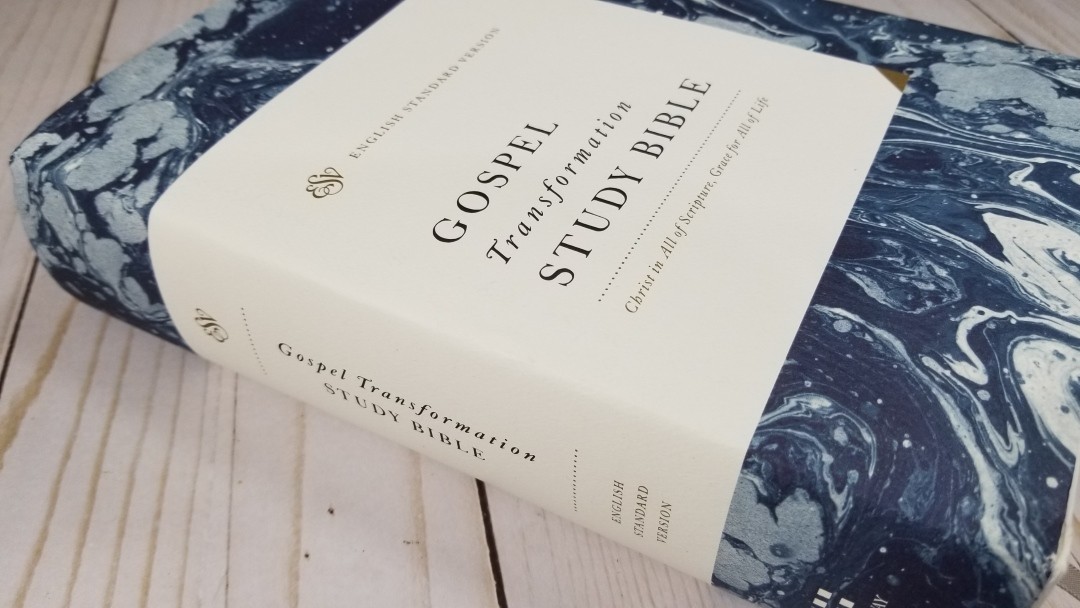

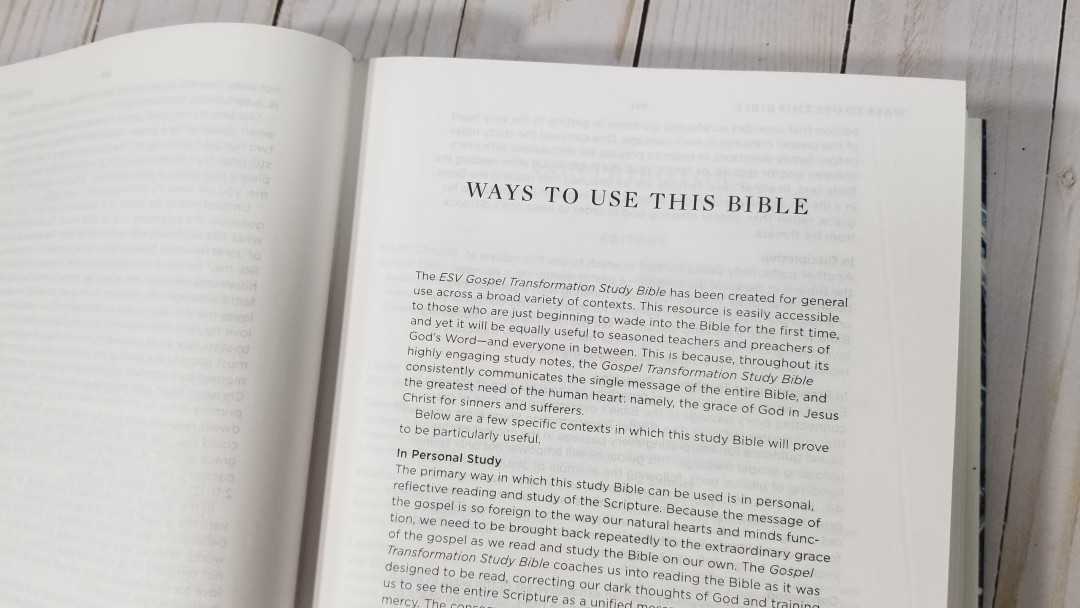
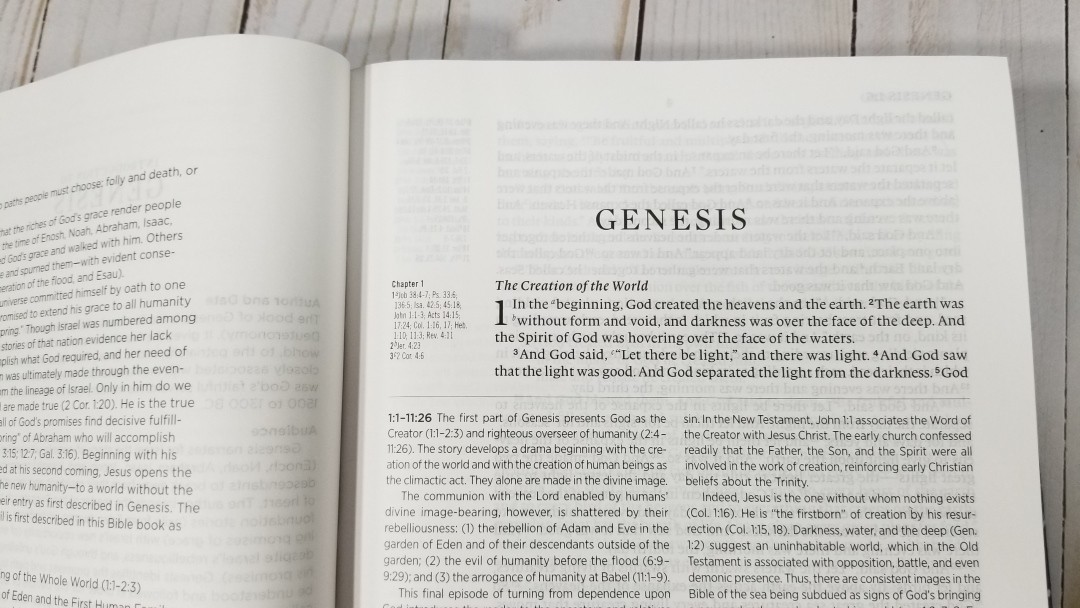
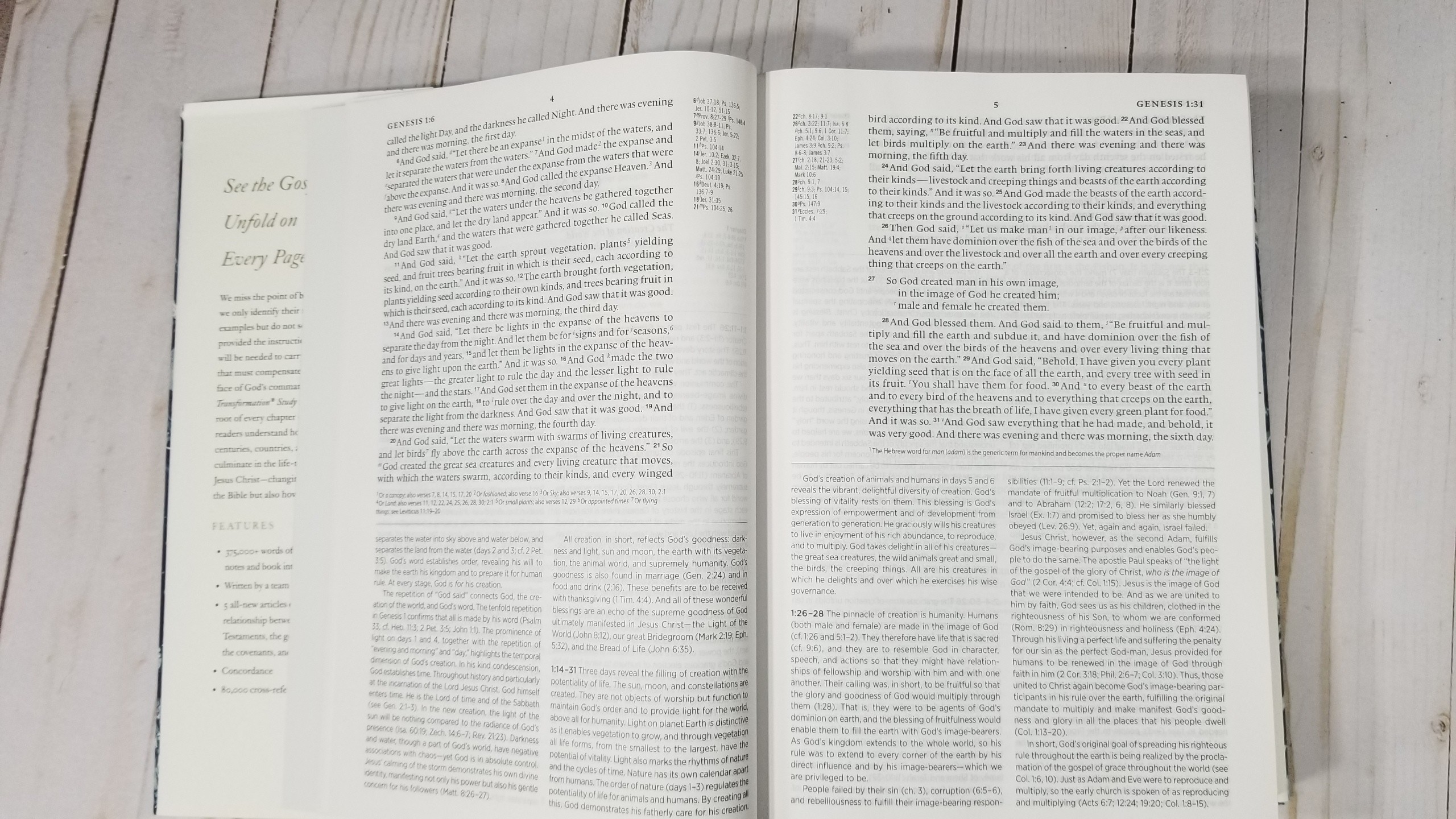
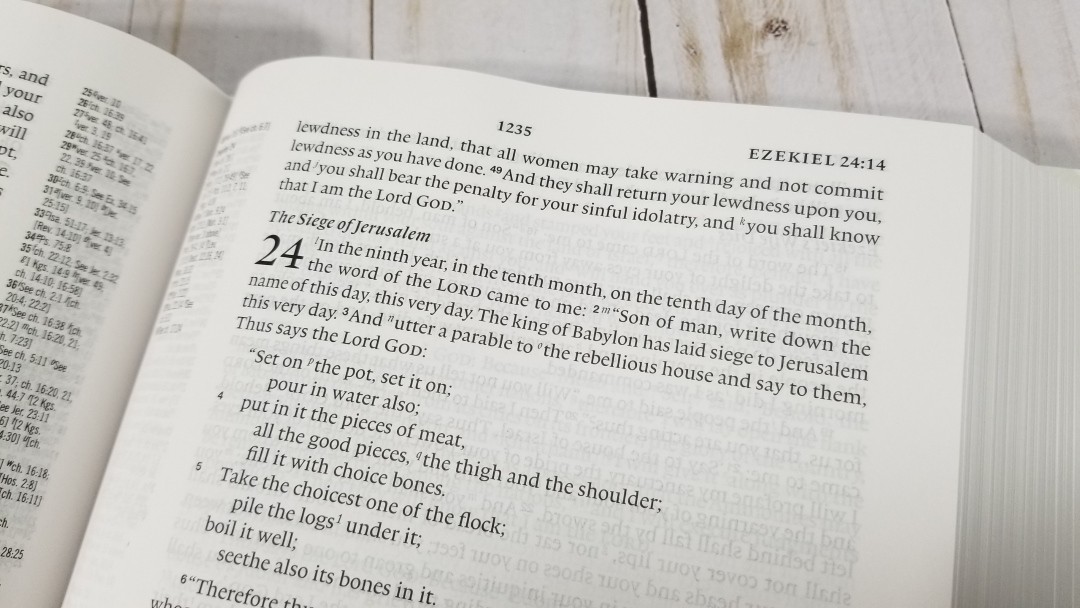
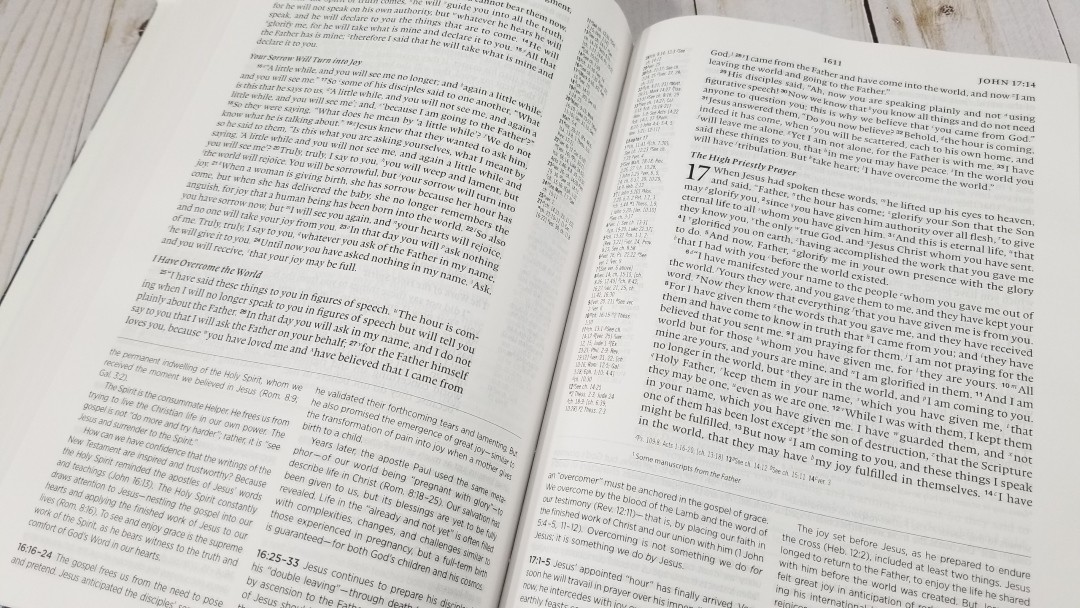
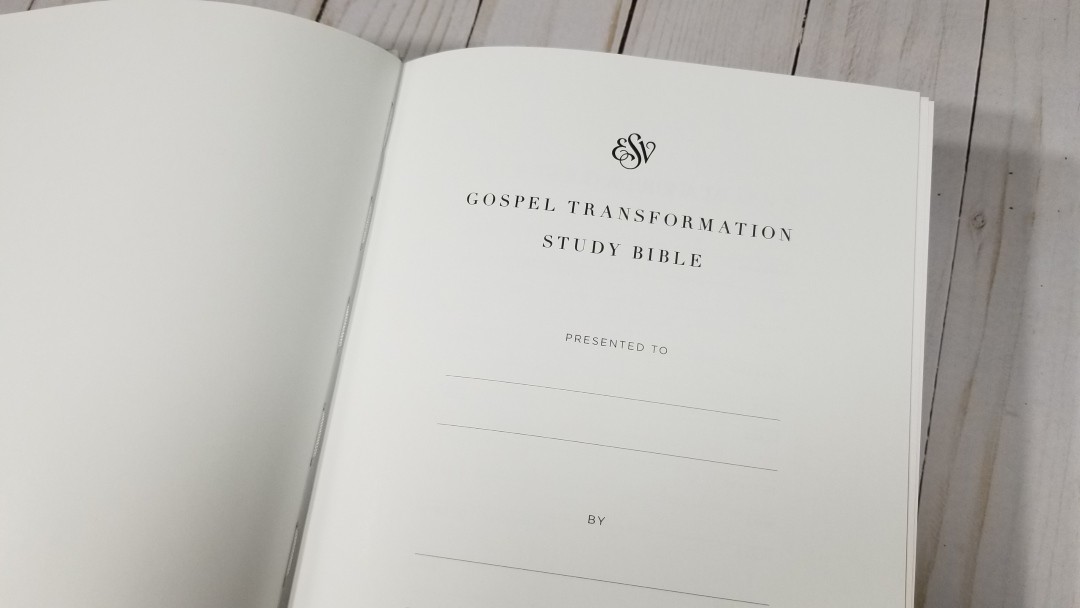


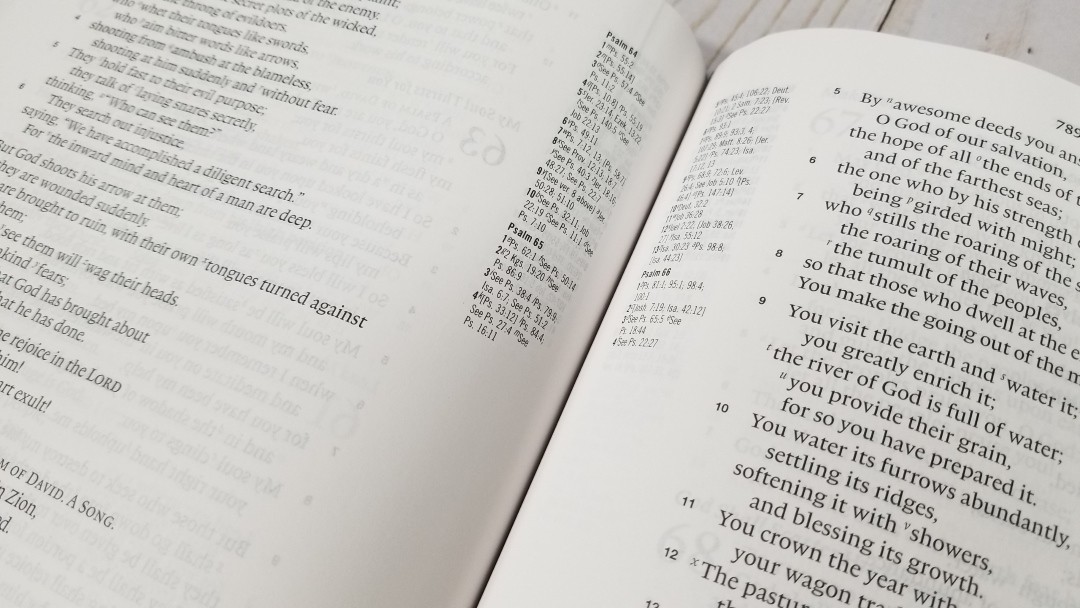

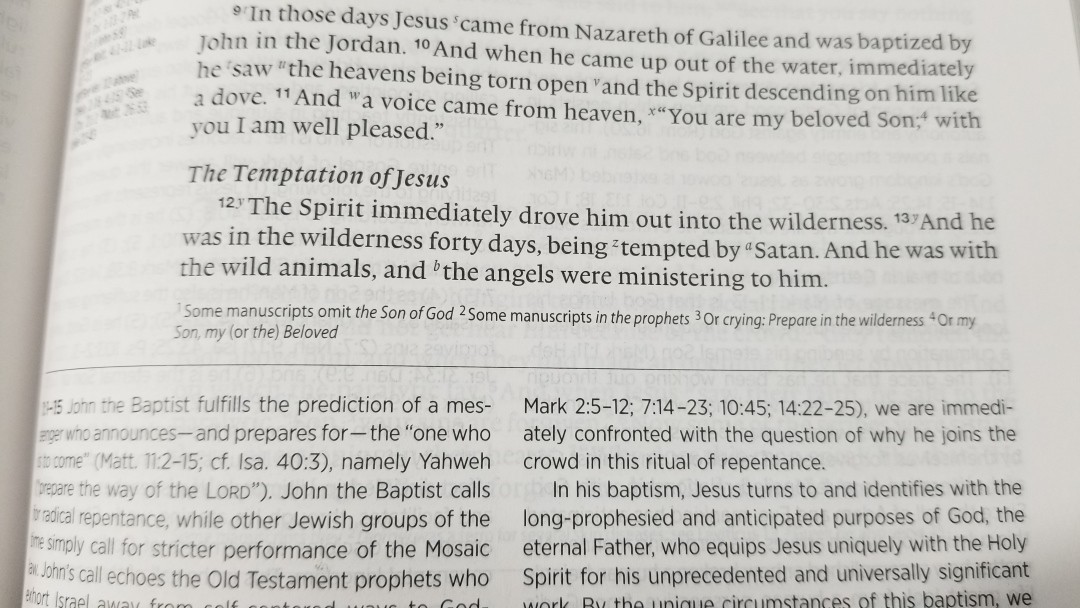
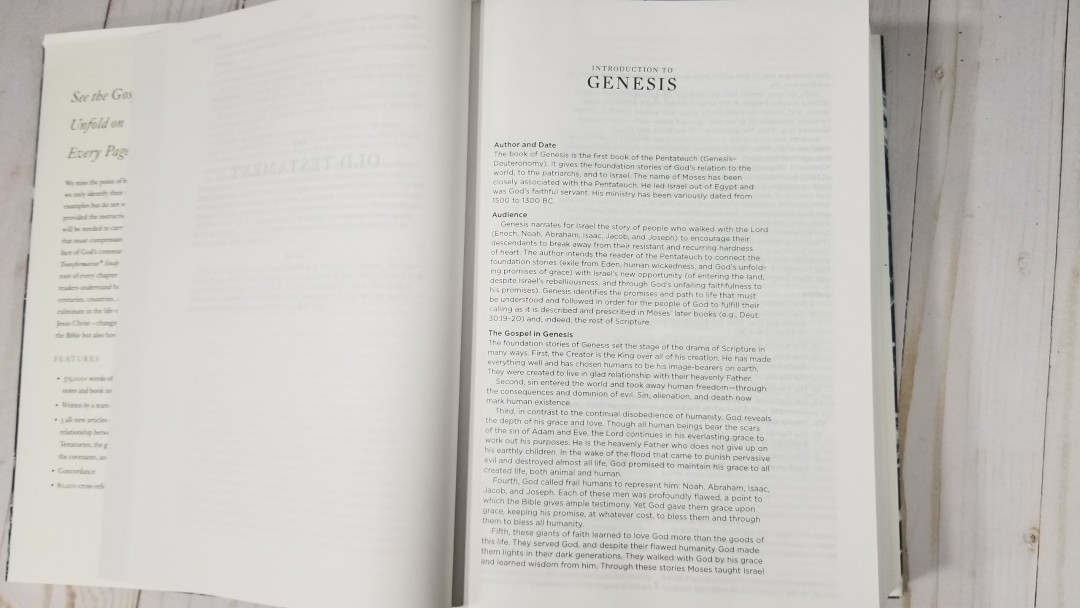


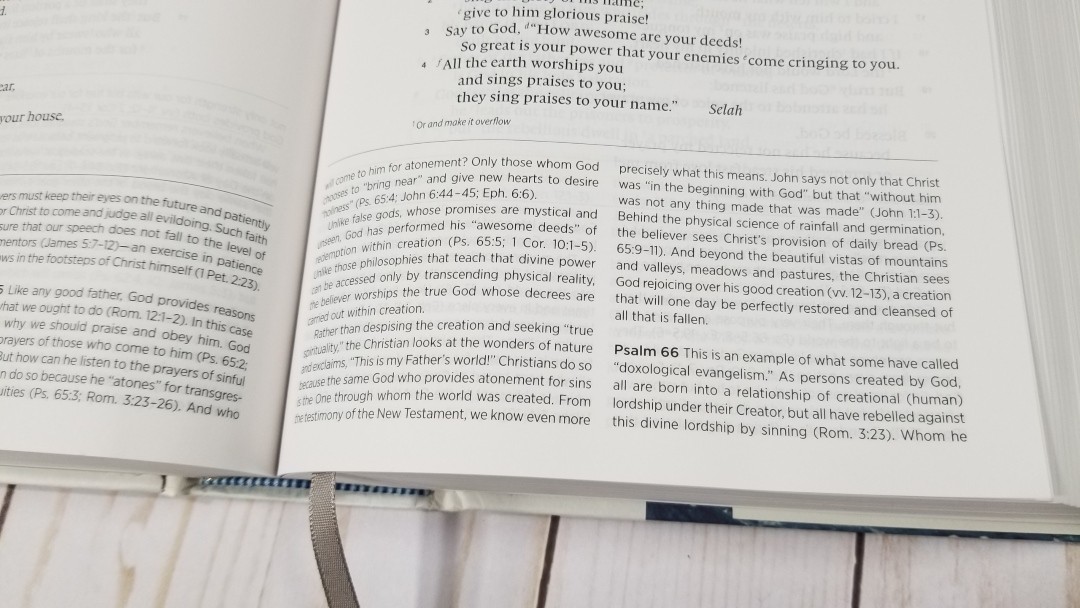

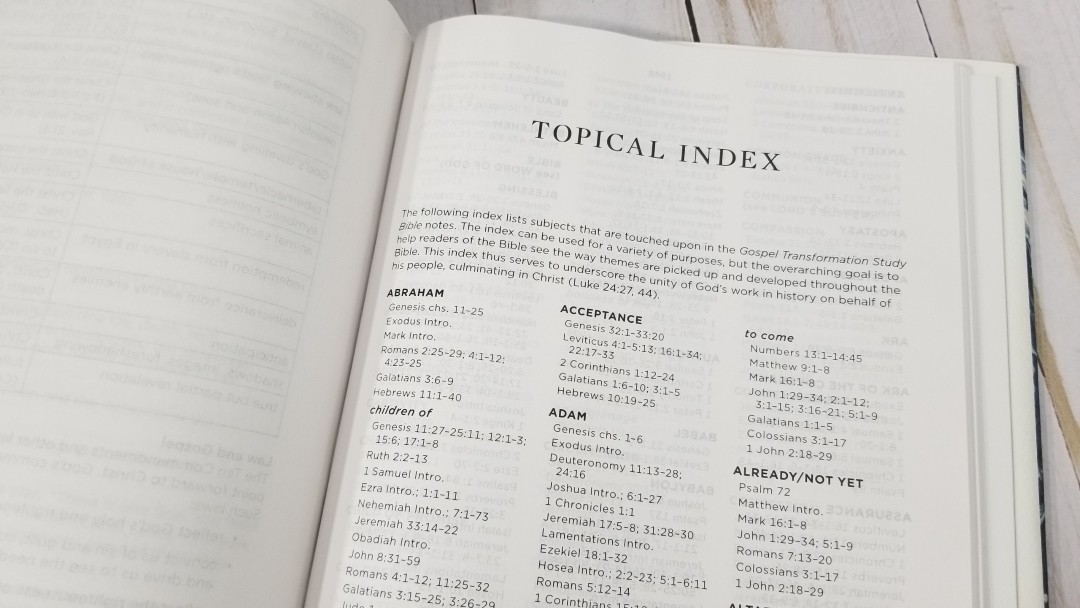

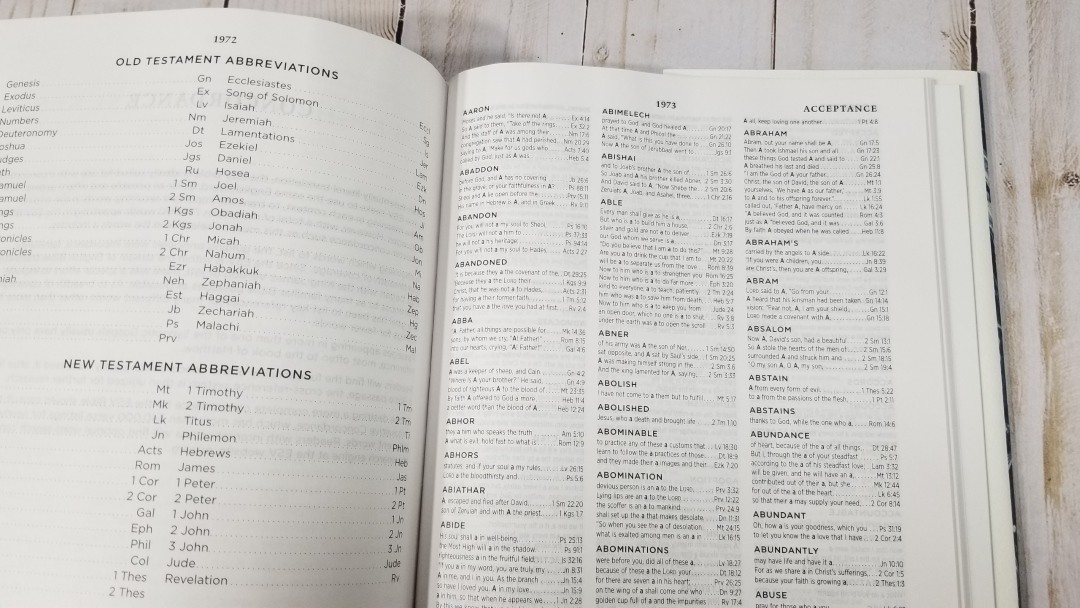
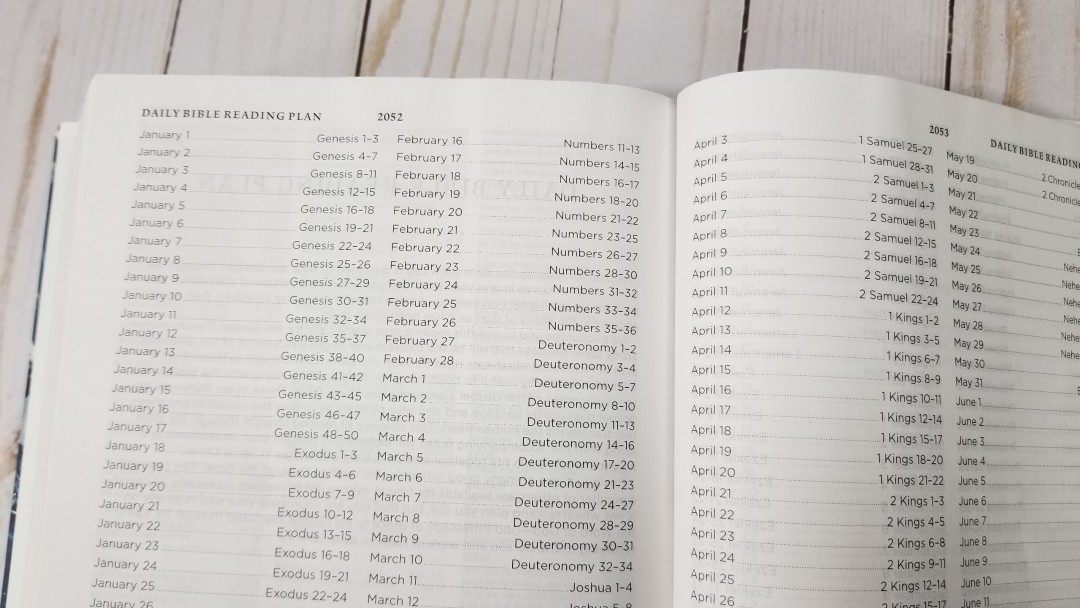
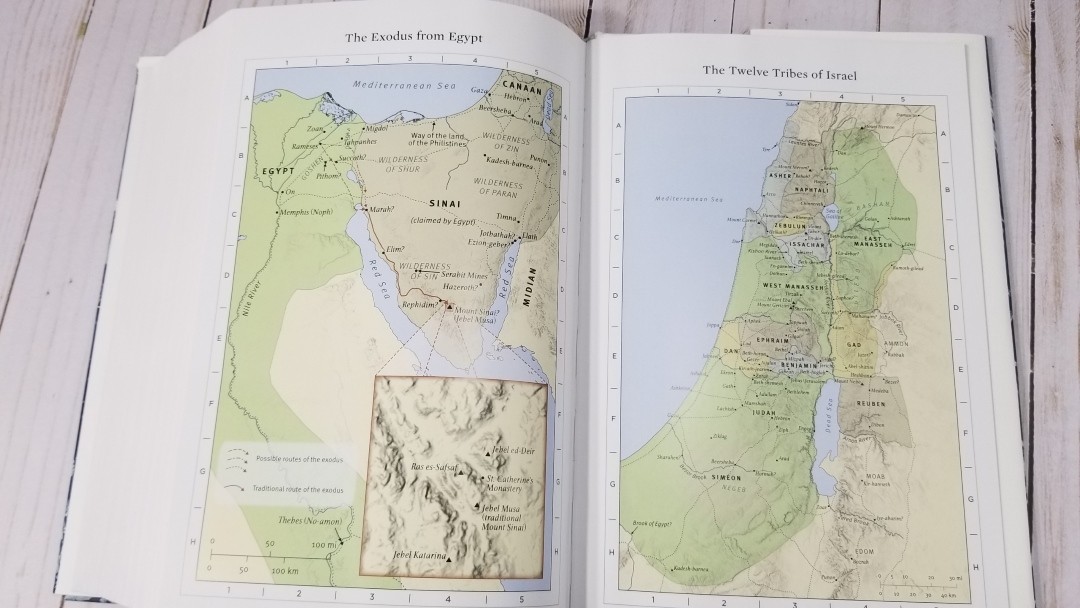
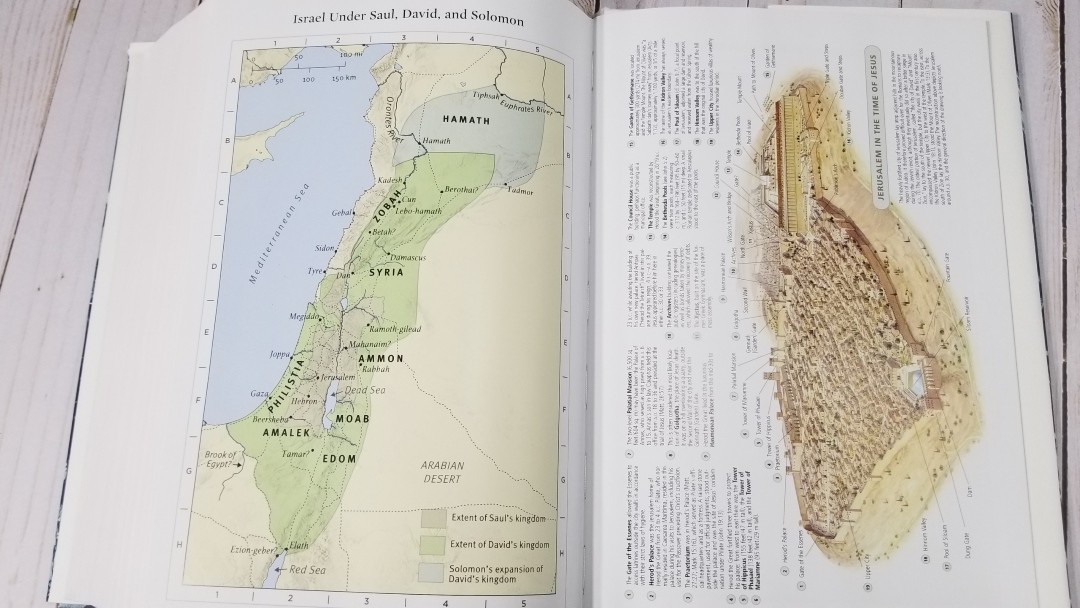
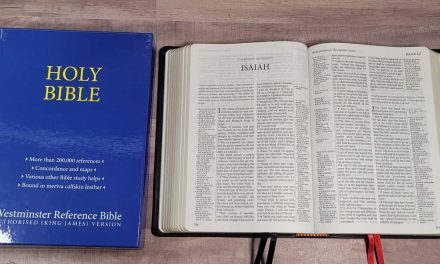
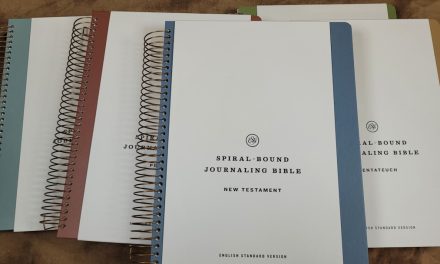
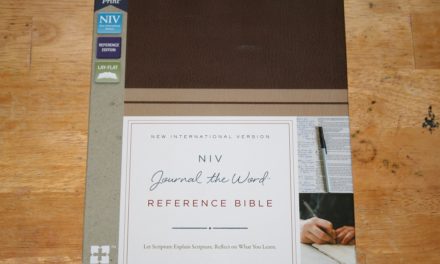






I read I most of your reviews that you provide a honest feedback. But there is not a lot of negative or cons stated in your reviews. I miss this because also negative comments or view points are very helpful by deciding which bible to buy. For example in this review I can think about some items: – only 1 ribbon, first page is folding in the hardcover edition, pages are bleeding through, why a bible reading plan covering several pages when you can also state it in one sentence that if you read 3 chapters a day you can read the bible in one year. Furthermore reading the bible from genesis to revelation isn’t always the best method (most people quit in this manner). For example reading new and old testament would be a better solution.
I also would like to know what theology background is used for the introductions per chapter and for what kind of person are this written (new Christians, teens?
Thanks. I do mention those, but I don’t want to decide if they’re positives or negatives because everyone has their own tastes. I’ve had readers that prefer no ribbons at all, some who say anything less than 4 is a negative, some who only read in biblical order, etc. I prefer to tell what it has and you can decide for yourself if it works for you. I’ll get back to you on the last question.
Randy, thank you for the review. Do uou know if the commentary was revised at all from the previous edition? Either by you comparing sample paged ir if you adked Crossway?
I think it’s mostly the same with a few additions. I’ll grab my older edition from the Church and compare them this weekend.